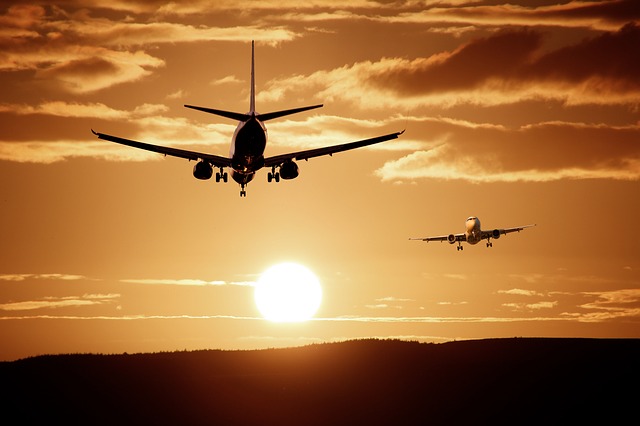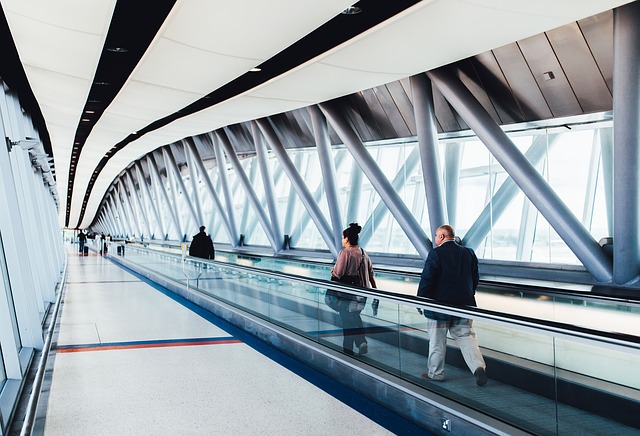Maximizing Downtime During Travel: Staying Productive In-Flight

Why bother messing around with anything on the plane, right?
You’re there to relax, and besides, most airlines force you to turn off electronics while you’re taking off and landing. Here’s the thing: You can (and probably should) get a lot done while you’re up there in the sky. Here’s how to maximize your productivity up there, so you can relax when you land.
Plan Your Flight Carefully
A big part of maximizing your productivity in the air starts when you’re on the ground.
When you plan out your flight, you will want to ask your travel agent or airline rep about which flights have the on-time records. Not all airlines get to their destinations on time or have a great record for doing so. Spend some time researching the stats yourself if you’re not using a travel agent.
You should also get your global entry application guide if you’re planning on traveling to or from the U.S. A Global Entry pass helps speed you through customs without having to wait in long lines. It basically shortens the security checkpoints if you’re a low-risk traveler. Security checkpoints are really unproductive and they just hold you up.
But, you also can’t do your own thing because security personnel are demanding your attention. It’s also very valuable to have this, along with a TSA precheck if you’re traveling inside the U.S.
Book your flight base on the speed with which you can get to your destination. Note: this will not always be the cheapest flight, and that’s OK. Spend a little more to fly out on a slower day rather than buying a cheap ticket and then spending more time stuck in an airport going through security checkpoints.
Morning flights between 6AM and 7AM are usually a good bet as not many travelers fly during these times. Summer thunderstorms that affect the airline system usually happen in the afternoon, too, so you should avoid flying during this time if you want to get to your destination quickly.
 It just so happens that many travelers like afternoon flights because it means they don’t have to get up too early in the morning to board the plane.
It just so happens that many travelers like afternoon flights because it means they don’t have to get up too early in the morning to board the plane.
But, this can be a benefit for you if you’re willing to buck the trend.
Book non-stop flights to your destination, when possible. This obviously decreases the potential delays you’ll experience. But, when you do have a layover, plan for it in advance. You know it’ll happen in advance, so you can plan to do some work or reading. This could the perfect time to get some food into your children.
Assume you will not be fed on a flight unless you’re going on an international trip. Sometimes, the airlines do offer snacks on flights, but these will be light and probably not very filling. Pack food for your family – especially if you have little ones.
Make sure you’re not surprised by security. Have you driver’s license of passport out and ready for security agents.
How To Reduce Screening Times
You should expect to be waiting in line for about an hour for most security screenings. If it happens to be an especially busy day at the airport, it could take a lot longer, however. Metal detectors are usually set to lower tolerances so you should empty your pockets of unnecessary coins or keys, and remove your belt and any other metal objects.
If you’re traveling in the U.S., you will probably be asked to go through enhanced security screening which includes a whole body scanner. You can refuse this screening for personal screening. If you do, you must notify the TSA agent that you want to “opt out” of the screening. You will be taken to a private area where you will be screened. The TSA agent will pat your down with gloves on and then wipe the gloves and insert them into a machine to check for any explosive residue on your body.
Finally, if you are bringing gifts, make sure that you understand that the TSA, or other security personnel, will confiscate them and search through them. They will be unwrapped.
So, your best bet is to wrap them at your destination or put them in your carry-on luggage.
Make Sure You Can Work Without Internet
Get your important work out of the way before you get on the plane. You don’t want to be stuck up in the air without Internet and have to pay for it. First of all, wi-fi on a plane is notoriously bad, and it’s expensive.
Secondly, you can’t use your electronics during takeoff or landing, so you’re already limited there. But, as long as you can switch off your device or put it into airplane mode, then restarting it once you’re in the air is not a big deal. And, you can get a lot of work done if all you have to do is open up a word processor.
Set goals for what you will do, focus, and just get it done. When you get back on the ground, you can re-sync with Dropbox or your cloud service provider.
Bring Other Things To Do
When you fly, you should bring things for you and the family to do. Games, laptops, eReaders, and tablets are all good ideas. Reading, watching movies, or playing games can make the time pass. You don’t necessarily have to type or write to be productive. You could do light reading, research, or give your mind a break with some games.
Noah Bryant is currently exploring Australia, and has been travelling solo for the last 8 months, travelling around the world. He is a keen writer and finds the best time to write an article is on a plane, train or coach journey.






Leave a Reply